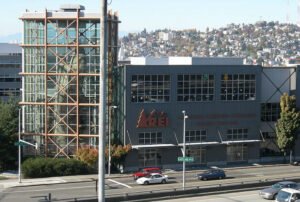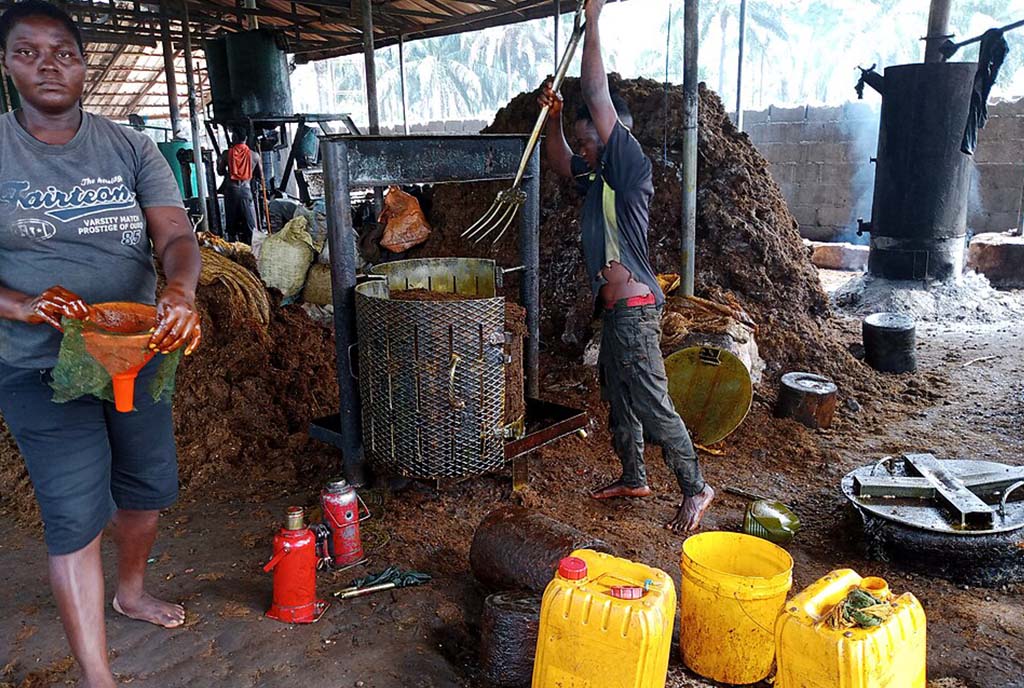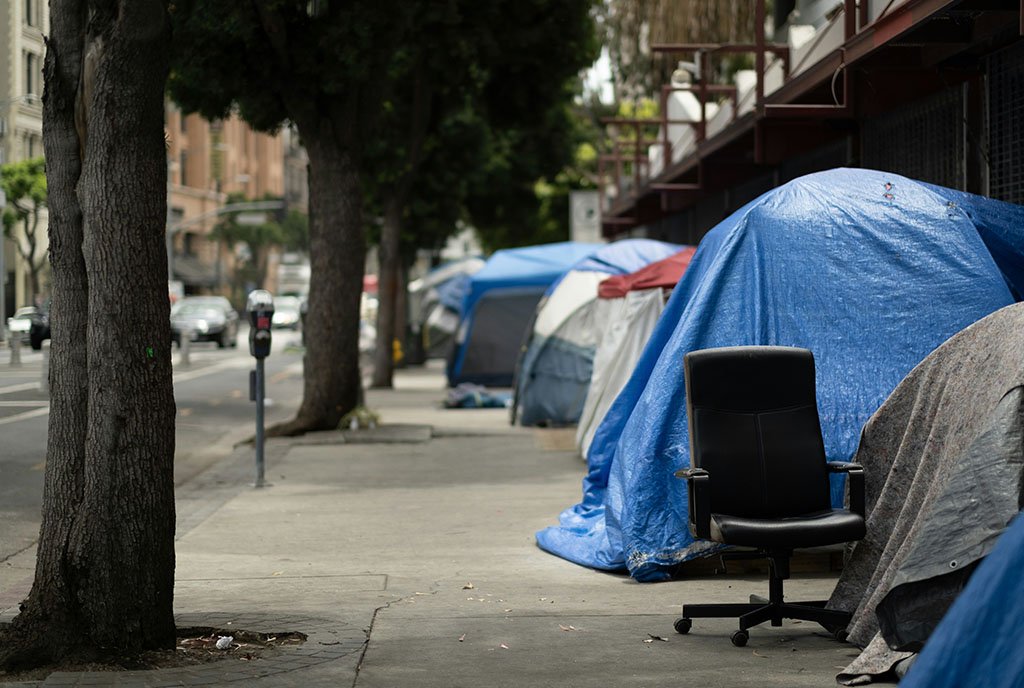
Earlier this month, the National Community Reinvestment Coalition (NCRC) held its 30th annual conference. But in a session titled “The Stories We Tell: Journalism for a Just Economy,” the organization broke new ground, initiating a new conversation for the group regarding the intersection of journalism and economic justice.
Andrew Nachison, chief of communications at NCRC, introduced the topic as an exploration of the “place of journalism in local communities and community wealth building and whether there are other opportunities to drive more capital into local journalism.” Nachison added that a central question was whether journalism is “necessary or nice to have for the vitality of local communities.”
Joining the panel moderated by Nachison were Candice Fortman of Outlier Media in Detroit; S. Mitra Kalita of URL Media (which serves as a platform for multiple Black and Brown media outlets) and Epicenter NYC in Queens; Tracie Powell, program officer at Borealis Philanthropy for its Racial Equity Journalism Fund; Steven Waldman, president and cofounder of Report for America, and NCRC senior advisor Josh Silver.
The conversation marks a departure for NCRC, a group primarily known for its advocacy efforts to counter redlining. Often, NCRC leverages the rights of community groups to testify about community reinvestment act (CRA) performance at the time a bank seeks to merge with or acquire a competitor. Under federal law, these moments provide an opportunity for advocates to press banks to commit to increasing their lending and investment in low-income communities and communities of color.
In April, for example, NCRC and its local allies finalized a “community benefits” agreement with PNC Bank, in which the bank agreed to commit $88 billion in lending to low-to-moderate income communities between 2022 and 2025 in exchange for getting community support to acquire USA Bancshares. Of this money, $47 billion is committed for home loans, $26.5 billion for small business loans, and $14.1 billion for community development loans. Additionally, the bank pledged $400 million in deposits in community development financial institutions (CDFIs) and said it would make grants of at least $500 million. Since 2016, NCRC has negotiated 15 similar agreements with other banks for a total of $298 billion.
A central question of the panel was whether some of that bank capital—say, within that $88 billion deal just inked with PNC—could support local journalism. A related question was what kind of local journalism is it that a just economy demands.
In the conversation, it was clear that local journalism as it has often been traditionally practiced was not what conference panelists had in mind. Powell noted that in the past year, “We’ve heard a lot about racial reckoning. There has also been a reckoning in journalism.… The real reckoning, I believe, is the redefining of journalism and what journalism means to local communities.”
This reckoning, Powell adds, requires careful attention to communities’ information needs and creating “a real sense of community ownership of local news.”
Fortman concurs. “So much of the news,” she observes, “is for people who are curious or want to be entertained.” Outlier Media, she notes, focuses squarely on low-income Detroit residents and surveyed community members to find out what information Detroiters lacked and needed. The answers that came back included things like “How do I get access to childcare?” and how to apply for rent assistance or to get power restored. “We allow our community to tell us the information we need to go after,” she adds.
Outlier, Fortman notes, has set up a text line so residents can get immediate answers to frequently asked questions. The text line also includes an option to leave a message, with a commitment that a reporter will respond within 48 hours. The goal of the operation, Fortman adds, is “accountability and investigative journalism for folks who are underserved.”
Sign up for our free newsletters
Subscribe to NPQ's newsletters to have our top stories delivered directly to your inbox.
By signing up, you agree to our privacy policy and terms of use, and to receive messages from NPQ and our partners.
Kalita, who had worked at CNN, notes the very different focus of community media, which for Epicenter NYC has included helping local businesses figure out how to get Paycheck Protection Program loans and helping local restaurant workers—an estimated 40 percent of whom in New York City are undocumented—get vaccinated. She adds that the operation she leads includes residents of both low and high incomes.
Waldman’s group, Report for America, has raised philanthropic money to support 300 reporters nationally, 40 percent of whom are journalists of color. Waldman notes that “when the local news system collapses,” the “health of the community is at stake,” adding, “The nonprofit sector is going to have to play a bigger role in local media. I don’t just mean big philanthropists, [but also] nonprofit groups, small donors, and community foundations. Community media won’t survive without the support of the community.”
Waldman observes that philanthropic funding has gone up by about $200 million a year, but that intervention of $1-2 billion a year is needed. More broadly, Waldman advocates for a combination of community, philanthropic support, and some form of government support, such as tax credits.
For his part, Silver was optimistic that some of that $88 billion from PNC could qualify to support local journalism. If what is being sought are small business loans of less than $1 million, those would qualify as a form of small business lending. But if a local media outlet, provided it is under community ownership, needs “a loan or investment for more than $1 million, I think you can make a strong case that the information is critical to the survival of their communities. You can make a case that it should qualify under CRA.” Silver adds that CRA regulations are slated for revision in 2021, provided an opportunity for the public to weigh in.
Rethinking Journalism
Journalism is important, but Kalita notes that “the word ‘journalism’ to many communities tends to be a repellant, or a great unknown.” Mitra adds, “Journalism feels a little self-congratulatory. It conveys a way of doing things. We have to shift to provide the right information with the right delivery models.” The danger, she adds, is to revert to “the nostalgia of six tabloid papers in New York City” and pretend that, everything was great. “It was not great,” she reminds the group.
Powell adds that a key part of rebuilding journalism for economic justice requires redefining who is the audience for journalism.
I want to go back to that concept of redlining.… While there was redlining in terms of housing, there was also redlining in terms of news and information. You had publishers of daily and regional news outlets intentionally deciding to produce news information for very affluent, upwardly mobile people. That meant excluding whole parts of their community. And so when we talk about how we fund in the future going forward, we have to keep in mind community ownership, community participation, and, dare I say, community partnership.
Fortman adds, “We are in the Wild West.… I think it is going to look a lot different than it looks today. You’re going to have a lot more small newsrooms, and I really hope you’re going to have a lot more community-based newsrooms.”
Powell concluded by reinforcing this point: “Smaller and independent is important. But also understanding that information is not from the top down anymore. It is not even necessarily from the bottom up. It is what I call circular and horizontal. It is completed with feedback loops and really listening to the community and responding to community needs.”












